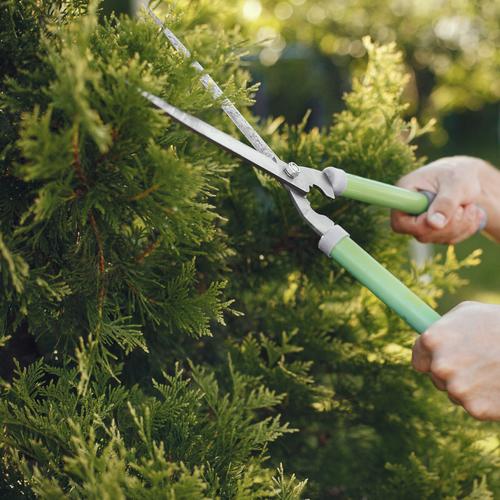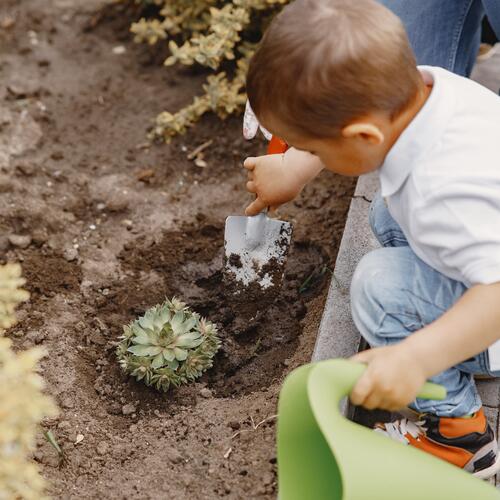Design Your Own Sensory Garden
Design Your Sensory Garden
Creating a sensory garden is a delightful and rewarding endeavour that can enhance the outdoor experience for individuals of all ages and abilities. Whether you have a large plot of land or a small urban space, designing a sensory garden allows you to engage the senses of sight, smell, touch, taste, and sound, promoting relaxation, mindfulness, and connection with nature. In this comprehensive guide, we will explore the steps involved in planning, designing, and maintaining a sensory garden, offering practical tips and creative ideas to inspire your own unique space.

1. Planning and Design
Before digging into the soil, it's essential to carefully plan and design your sensory garden to ensure it meets your needs, preferences, and available space. Consider the following factors:
a. Purpose and Goals
Define the purpose of your sensory garden. Is it meant to provide relaxation, stimulate the senses, or serve as a therapeutic space? Identifying your goals will guide the design process.
b. Site Selection
Choose a suitable location for your garden, considering factors such as sunlight exposure, soil quality, accessibility, and proximity to water sources.
c. Layout and Structure
Sketch out a rough design, considering the layout of pathways, seating areas, raised beds, and focal points. Incorporate elements that engage all the senses, such as colourful flowers, aromatic herbs, textured foliage, wind chimes, and water features.
d. Plant Selection
Research plants that appeal to each sense and thrive in your local climate. Choose a diverse range of species, including flowers, shrubs, trees, herbs, and grasses, with varying colours, textures, scents, and Flavors. To make your life easier, here at Stone Zone, we offer a wide range of Soils no matter what you want to grow; check out our Wessex Soils range to find the perfect one for you.
e. Accessibility
Ensure that your sensory garden is accessible to people of all abilities by incorporating wide pathways, raised beds, and seating areas. Consider adding sensory elements at different heights to accommodate children and wheelchair users. Our Porcelain Paving range is an excellent choice, especially when paired with Decorative Stones, for creating beautiful yet accessible pathways and walkways. Our Porcelain Paving slabs have an R-11 skid rating so it's safe even in rainy weather, making them ideal for walking or for wheelchairs.

2. Planting and Construction
Once you've finalized your design, it's time to bring your sensory garden to life through planting and construction. Follow these steps to transform your vision into reality:
a. Prepare the Soil
Test the soil pH and amend it as needed to create an optimal growing environment for your plants. Incorporate organic matter, such as compost and aged manure, to improve soil structure and fertility.
b. Install Hardscaping
Begin by installing any hardscaping elements, such as pathways, raised beds, trellises, and seating areas. Use durable materials that complement the overall design aesthetic and withstand outdoor conditions.
c. Plant Selection and Placement
Start planting your chosen species, taking into account their mature size, growth habits, and spacing requirements. Group plants with similar watering and sunlight need together to create microclimates within your garden.
d. Incorporate Sensory Elements
Integrate sensory elements throughout your garden, such as fragrant flowers, textured foliage, wind sculptures, water features, and edible plants. Arrange them strategically to engage the senses and create focal points of interest.
e. Mulch and Water
Apply a layer of mulch around your plants to conserve moisture, suppress weeds, and improve soil health. Water your garden regularly, paying attention to the specific needs of each plant species and adjusting your watering schedule accordingly.

3. Maintenance and Care
To ensure the long-term success and vitality of your sensory garden, regular maintenance and care are essential. Follow these guidelines to keep your garden looking its best:
a. Weed Control
Monitor your garden regularly for weeds and promptly remove them to prevent competition for water, nutrients, and sunlight. Consider using organic mulches or ground covers to suppress weed growth.
b. Pruning and Trimming
Prune and trim your plants as needed to maintain their shape, promote healthy growth, and prevent overcrowding. Remove dead or diseased branches to reduce the risk of pests and diseases.
c. Fertilization
Feed your plants with a balanced fertilizer to replenish nutrients and support vigorous growth. Follow the recommended application rates and timing for each plant species, taking care not to over-fertilize, which can cause nutrient imbalances and environmental pollution.
d. Pest and Disease Management
Monitor your garden for signs of pests and diseases, such as insect damage, fungal infections, and wilting foliage. Implement integrated pest management strategies, such as cultural controls, biological controls, and least-toxic pesticides, to minimize damage and preserve beneficial insects.
e. Seasonal Care
Adapt your maintenance routine to the changing seasons, addressing tasks such as winter protection, spring cleanup, summer watering, and fall pruning. Stay vigilant for weather-related hazards, such as frost, drought, storms, and extreme temperatures, and take appropriate measures to protect your plants.

4. Enjoyment and Engagement
Above all, a sensory garden should be a place of enjoyment, relaxation, and sensory exploration for all who visit it. Take time to immerse yourself in the sights, sounds, smells, textures, and tastes of your garden, savouring the beauty and diversity of the natural world. Invite friends, family, and community members to share in the experience, hosting events, workshops, and educational programs to foster connection and engagement with nature.
In conclusion, creating a sensory garden is a fulfilling and enriching endeavour that allows you to engage the senses, promote well-being, and cultivate a deeper connection with the natural world. By following the steps outlined in this guide, you can design, plant, and maintain a sensory garden that brings joy, inspiration, and sensory delight to all who encounter it. So, roll up your sleeves, dig in the dirt, and let your imagination soar as you embark on this exciting sensory exploration and discovery journey in your backyard.

